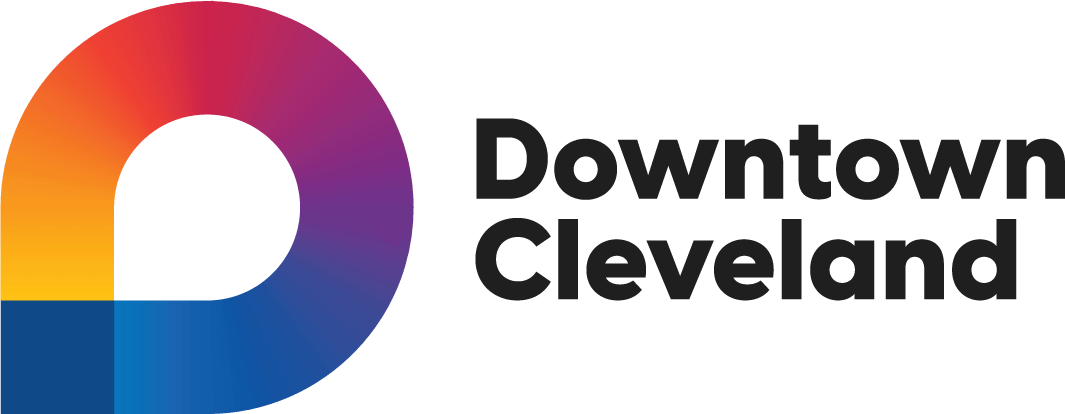Wondering Who Is Leading Downtown's Recovery? We Are.
A bustling E. 4th street before the 2022 Cleveland Guardians Home Opener
Downtown Cleveland’s recovery from the pandemic is palpable on the streets, visible at events and office buildings, and evident by the numbers. About 60% of Downtown’s workforce has returned to the office, foot traffic has returned to nearly 80% of pre-pandemic levels, and we have had more small businesses open Downtown over the course of the pandemic than close.
However, the recently published article on Cleveland.com calls into question the pace of Downtown Cleveland’s pandemic recovery, and subsequently, Downtown Cleveland Alliance’s reporting on the topic. The article is based on a recent study published by U.C. Berkeley’s Institute of Governmental Studies, which ranks the recoveries of large and mid-sized cities across the US and places Cleveland near the bottom. The study area does not accurately capture the Downtown Cleveland geography, thus misrepresenting the state of our recovery.
After careful review, our team has found that the Berkeley study uses a different definition of “Downtown” in their analysis of the Cleveland market and ultimately excludes many of the areas that attract workers, visitors, and residents. Those are the very areas that show us the true recovery of Downtown Cleveland. The Berkeley study group uses only the zip code 44114, leaving out major Downtown locations including Playhouse Square, the Warehouse District, much of the Gateway District, E. 4th Street, The Flats, much of Euclid Avenue between Public Square to CSU, Progressive Field, Rocket Mortgage Fieldhouse, much of the CSU campus, Tri-C, and Public Square and its surrounding areas – all employment centers and destinations for residents, visitors and tourists alike.
This map shows the geography used by the U.C. Berkeley study (in red) compared to the DCA study boundary (dotted line)
Over the last year, DCA has tracked Downtown’s recovery using Placer.ai, a platform that provides location analytics sourced from anonymized cell phone data. We have supplemented and verified this data using additional sources including GCRTA, office building security swipes, STR hospitality data, BLS employment data, event attendance, as well as anecdotal evidence from our partners. Our comprehensive reporting can be seen in our Monthly Recovery Reports.
Graph from the August DCA Recovery Report showing increased foot traffic month-over-month compared to 2021 and 2020
Monthly Downtown Foot Traffic
The graph above shows monthly foot traffic since January of 2020. Prior to the pandemic, monthly foot traffic was averaging around 5.5M per month. In April of 2020, foot traffic dropped to 1.2M visitors. Foot traffic quickly started recovering, reaching nearly 3M by October 2020. The momentum continued into 2021, reaching 4.4M by October. In 2022, we reached that peak by March. June 2022 reached a 78% return to foot traffic compared to June 2019.
Strategies to Accelerate Downtown’s Recovery
Downtown Cleveland Alliance and the City of Cleveland are leading Downtown’s recovery. In partnership with Mayor Justin Bibb, we launched “The Connection is Stronger Downtown” campaign earlier this summer to encourage workers to return to the office. In addition to aggressive guerrilla marketing, the campaign includes the following initiatives:
Mondays: Memorial Monday // Square Sounds
Tuesdays: Food Truck Tuesday // North Coast Namaste // Pop-ups at US Bank Plaza
Wednesdays: Walnut Wednesday // Music on the Malls // Courtyard Crawl // Lakefront Leagues // Warehouse Wednesday: Overlook Lunch
Thursdays: Lunch in the Lane // Ship Shape Run Club // Pop-ups at US Bank Plaza // Rock Hall Live
Fridays: Final Fridays Pop-ups at US Bank Plaza
Created a Return to Office Toolkit to help employers ease the transition back to the office and engaged with businesses to assist with their efforts to create an enjoyable experience for employees
Developed CleCoin, a Downtown Cleveland gift card program designed to circulate dollars within Downtown at participating restaurants and retailers. There are currently 20 participating Downtown retail establishments to date, and the list is growing.
Grew our place enhancement work by increasing the visibility of our Clean, Safe, and Welcoming Ambassadors and adding outreach specialists to the team. We are also adding more murals and public parks, including Lighthouse Park in the Warehouse District and Canal Basin Park in the Flats.



